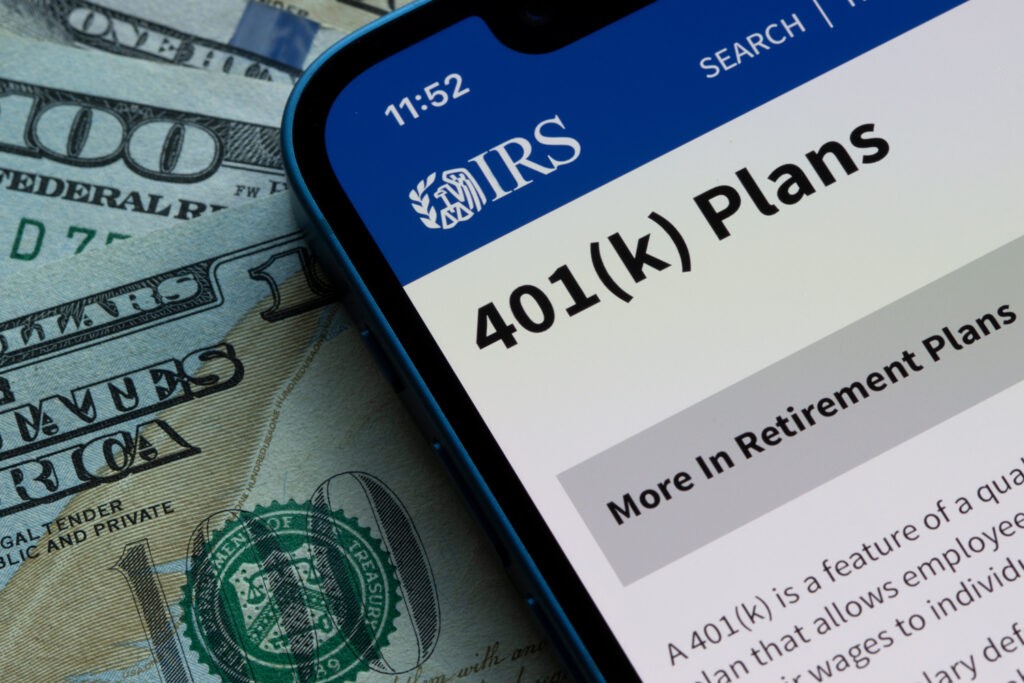
Saving for retirement is one of the most important financial goals in life, and one of the most effective tools available to U.S. workers is the 401(k) plan. This employer-sponsored retirement account allows individuals to invest a portion of their paycheck before taxes are taken out—potentially growing their nest egg faster than with a standard savings account.
In this article, we’ll break down how 401(k) plans work, their benefits, contribution limits, investment options, and common mistakes to avoid—so you can make the most of this powerful retirement vehicle.
What Is a 401(k) Plan?
A 401(k) plan is a tax-advantaged retirement savings account offered by many employers in the United States. Named after a section of the Internal Revenue Code, it allows employees to divert a portion of their salary into long-term investments—such as stocks, bonds, and mutual funds.
There are two primary types:
- Traditional 401(k): Contributions are made pre-tax, reducing your taxable income now. Taxes are paid upon withdrawal in retirement.
- Roth 401(k): Contributions are made with after-tax dollars. Withdrawals in retirement are tax-free, assuming certain conditions are met.
Some employers offer one or both options.
Key Benefits of a 401(k) Plan
1. Tax Advantages
- Traditional 401(k): Reduces your current taxable income.
- Roth 401(k): Allows for tax-free withdrawals in retirement.
Either way, you benefit from tax-advantaged growth, meaning your investments can compound over time without being taxed annually.
2. Employer Matching
Many employers offer a matching contribution—for example, 50% of your contributions up to 6% of your salary. This is essentially free money and should never be left on the table.
3. Automatic Payroll Deductions
Contributions are deducted directly from your paycheck, making saving automatic and consistent.
4. High Contribution Limits
In 2025, the IRS allows individuals under 50 to contribute up to $23,000 per year. Those 50 and older can make an additional $7,500 in «catch-up» contributions.
5. Investment Growth
Money in a 401(k) can be invested in a variety of options, including mutual funds, index funds, and target-date funds, allowing for compound growth over decades.
How Does a 401(k) Work?
1. Enrollment
When you start a job, you may be automatically enrolled in your company’s 401(k) plan. If not, you’ll need to opt in and choose how much to contribute.
2. Contributions
You choose a percentage of your salary to contribute. That amount is deducted from your paycheck before taxes (for traditional plans) or after taxes (for Roth plans).
3. Employer Match
If offered, your employer will contribute additional money based on your own contributions. For example, if you earn $60,000 and contribute 6%, your employer may contribute 3%—an extra $1,800 per year.
4. Investments
You select from a menu of investment options, often including:
- Target-date retirement funds
- U.S. and international stock funds
- Bond funds
- Money market funds
5. Growth Over Time
Your contributions and employer match grow tax-deferred (or tax-free with Roth). Over decades, this compounding effect can result in substantial savings.

Withdrawals and Rules
When Can You Withdraw?
You can begin withdrawing from your 401(k) without penalty starting at age 59½. Withdrawals are taxed as ordinary income (for traditional accounts).
Early Withdrawals
If you withdraw before age 59½, you may face:
- A 10% early withdrawal penalty
- Income tax on the distribution
Some exceptions exist—for hardship withdrawals, disability, or certain medical expenses.
Required Minimum Distributions (RMDs)
Starting at age 73 (or 75 depending on birth year), you’re required to begin withdrawing a minimum amount each year from a traditional 401(k).
401(k) vs. Other Retirement Accounts
| Feature | 401(k) | IRA | Roth IRA |
|---|---|---|---|
| Annual Contribution Limit (2025) | $23,000 | $7,000 | $7,000 |
| Employer Match | Yes | No | No |
| Tax on Contributions | Pre-tax or after-tax | Pre-tax | After-tax |
| Tax on Withdrawals | Yes (traditional) / No (Roth) | Yes | No |
While IRAs and Roth IRAs are also powerful tools, the 401(k) is unmatched for high contribution limits and employer matching.
Common Mistakes to Avoid
- Not contributing enough to get the employer match
You’re leaving free money on the table. - Cashing out when changing jobs
Rolling over to an IRA or new 401(k) is usually smarter to avoid taxes and penalties. - Overconcentration in company stock
Diversify your portfolio. Too much exposure to your employer can be risky. - Ignoring fees
Some 401(k) plans have high-cost mutual funds. Choose low-fee index funds when available. - Neglecting to increase contributions over time
As your salary grows, increase your savings rate to boost long-term growth.
Tips for Maximizing Your 401(k)
- Start early: The earlier you begin contributing, the more time your money has to grow.
- Increase contributions annually: Aim to raise your savings rate by 1% each year.
- Use target-date funds if unsure: These adjust automatically based on your retirement timeline.
- Stay invested during downturns: Don’t panic-sell. Markets recover over time.
- Review your investments annually: Adjust based on your age, goals, and market conditions.
Final Thoughts
A 401(k) plan is one of the most powerful tools available for retirement savings in the U.S. With tax advantages, potential employer matching, and the magic of compound growth, it provides a smart path to financial independence.
Understanding how it works—and using it wisely—can make a significant difference in your retirement readiness. Whether you’re just entering the workforce or already established in your career, taking full advantage of your 401(k) is a move your future self will thank you for.